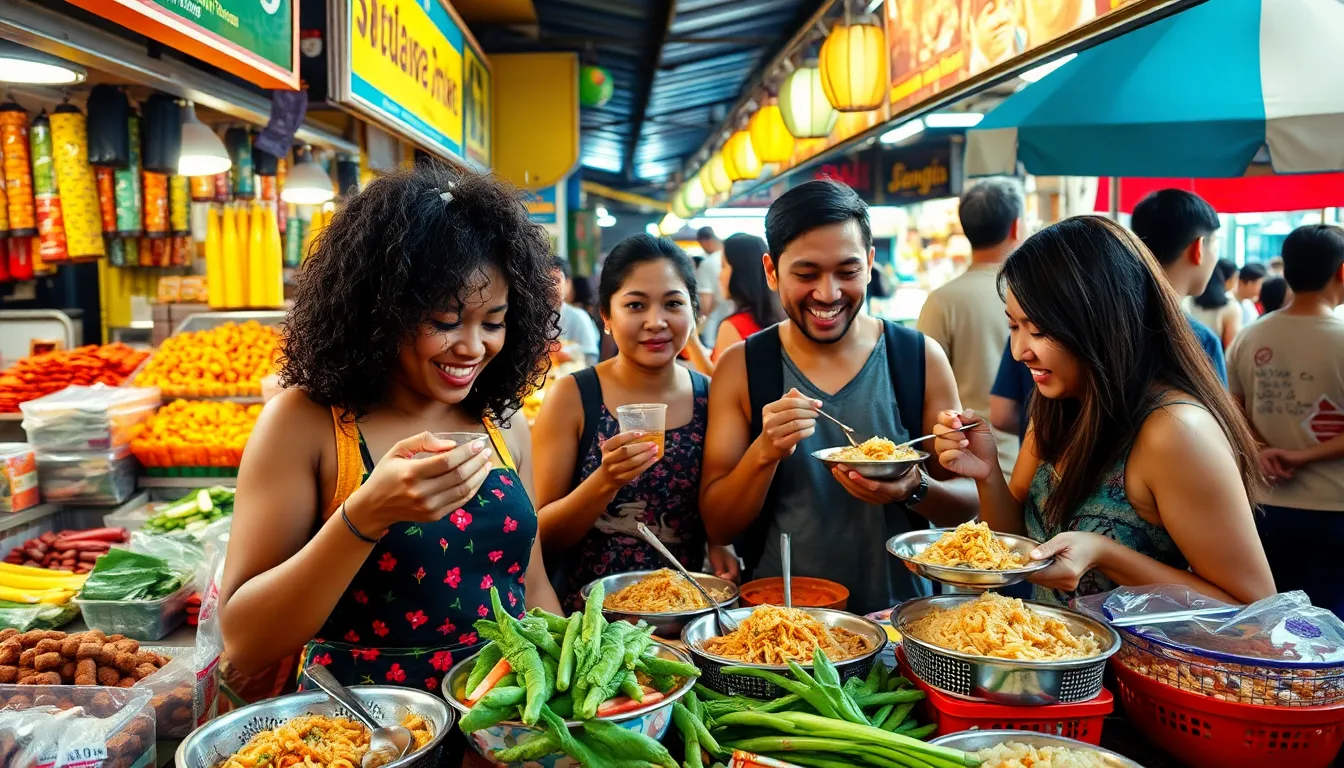Culinary tours offer a delicious way to explore the world, tantalizing taste buds while immersing travelers in local culture. From bustling street markets to elegant dining experiences, these tours showcase the rich diversity of global cuisines. Each bite tells a story, connecting food lovers with the traditions and history of the places they visit.
As travelers seek authentic experiences, culinary tours have surged in popularity. They provide an opportunity to not just sample local dishes but also learn about the ingredients and cooking techniques that define each region. Whether savoring fresh pasta in Italy or indulging in spices in India, culinary tours create unforgettable memories that linger long after the last course.
Table of Contents
ToggleOverview of Culinary Tours
Culinary tours offer immersive experiences for travelers seeking to explore local cultures through their cuisines. These tours showcase a range of dining options, from bustling street food markets to acclaimed fine dining establishments. Participants engage directly with local chefs, learning about the distinct cooking techniques and regional ingredients that shape each culinary tradition.
Travelers savor diverse dishes, enhancing their appreciation for local flavors. For instance, Italy’s fresh pasta exemplifies authentic regional cuisine, while India’s vibrant spices create unforgettable taste experiences. Each dish reflects the history and traditions of its region, allowing participants to connect with the local culture on a deeper level.
Culinary tours also often include hands-on cooking classes, market visits, and tastings. These activities provide unique opportunities for participants to enhance their culinary skills. Exploring a destination through its food fosters lasting memories and connections that extend beyond the plate.
Types of Culinary Tours

Culinary tours encompass a variety of experiences, each offering unique insights into local cuisine. Travelers can choose from different types of tours based on their interests and preferences.
Food Tasting Tours
Food tasting tours focus on sampling local dishes across various venues. Participants explore street food stalls, local restaurants, and artisan shops, savoring signature dishes and unique flavors. These tours often include guided tastings, where experts explain the cultural significance of each dish and ingredient. For example, a food tasting tour in Thailand might feature pad thai, som tam, and mango sticky rice, allowing travelers to appreciate the balance of sweet, sour, and spicy flavors prevalent in Thai cuisine.
Cooking Classes
Cooking classes provide hands-on opportunities to learn regional cooking techniques. Instructors, often local chefs, guide participants through the preparation of traditional dishes. Classes may cover various topics, from kneading dough for Italian pasta to mastering the art of sushi rolling in Japan. Learning in a kitchen setting allows participants to practice their skills, gain insights into local ingredients, and take home new recipes. For instance, a cooking class in Mexico might focus on creating authentic mole sauce, emphasizing local spices and cooking methods.
Market Tours
Market tours immerse travelers in the vibrant environment of local food markets. Participants discover indigenous ingredients and understand their role in regional cuisines. Guided explorations reveal the stories behind fresh produce, spices, and artisanal products. Market tours may include interactions with local vendors and opportunities to taste samples, enabling travelers to connect with the local community. A market tour in Morocco might showcase colorful stalls filled with spices, olives, and bread, enhancing the understanding of the culinary landscape.
Popular Destinations for Culinary Tours
Culinary tours feature a variety of destinations known for their rich food culture. Each region provides unique culinary experiences that attract food lovers from around the globe.
Europe
Europe stands out for its diverse culinary customs.
- Italy: Travelers indulge in authentic dishes like freshly made pasta, wood-fired pizzas, and regional wines. Culinary tours often include visits to local markets and cooking classes in Tuscany or Sicily.
- France: Gourmet experiences abound, from street-side crepes to multi-course meals in Michelin-starred restaurants. Tour participants learn about classic French techniques and regional specialties like coq au vin and ratatouille.
- Spain: Tapas culture reigns in regions such as Andalusia and Barcelona. Culinary tours may include wine tastings and lessons in preparing paella or gazpacho, showcasing the Mediterranean diet.
Asia
Asia offers vibrant flavors and a rich culinary heritage.
- Thailand: Known for its balance of sweet, sour, spicy, and salty flavors, culinary tours include street food exploration in Bangkok and cooking classes in Chiang Mai, highlighting dishes like green curry and pad thai.
- India: Spice markets and cooking sessions immerse travelers in India’s diverse regional cuisines. Participants often learn to prepare biryani, dosas, and various curries while exploring local traditions.
- Japan: Japanese culinary tours emphasize fresh, seasonal ingredients and traditional techniques. Experiences include sushi-making classes in Tokyo and visits to local izakayas in Kyoto.
South America
South America presents a blend of indigenous and European influences.
- Peru: Renowned for its fusion cuisine, culinary tours lead travelers through Lima’s gastronomic scene, featuring ceviche, causas, and culinary workshops showcasing local ingredients like quinoa and aji peppers.
- Argentina: Known for its beef, tours often focus on asado (barbecue) experiences. Travelers enjoy tasting various cuts of meat while exploring regional wines in Mendoza’s vineyards.
- Brazil: Culinary exploration includes street food like acarajé and feijoada. Hands-on experiences often feature visits to local markets and cooking lessons that reveal the complexity of Brazilian cuisine.
Benefits of Culinary Tours
Culinary tours offer enriching experiences that enhance travel through food. They allow individuals to engage with local cultures while gaining unique culinary insights.
Cultural Experiences
Culinary tours immerse participants in the local culture. Travelers explore traditional dishes, regional cooking methods, and historical food practices. Engaging with locals during meals encourages the sharing of stories and traditions related to food. For instance, tasting a handcrafted dish in a family-owned restaurant provides insights into the region’s heritage. Participating in local festivals also showcases the community’s culinary significance. Such experiences foster cultural appreciation and understanding.
Networking Opportunities
Culinary tours facilitate valuable networking opportunities. Travelers meet chefs, food producers, and fellow enthusiasts, fostering connections that can last a lifetime. Collaborative cooking classes encourage participants to bond over shared culinary interests. Visits to local markets provide introductions to farmers and artisans, enhancing knowledge of ingredient sourcing. These interactions often create a network of like-minded individuals passionate about food and culture, leading to future collaborations or friendships. Engaging in culinary tourism opens pathways for meaningful connections across geographical boundaries.
Culinary tours offer an exciting avenue for travelers to delve into the heart of local cultures through their food. By engaging with regional cuisines and learning from local chefs, participants not only savor unique flavors but also gain a deeper understanding of the traditions that shape each dish.
These immersive experiences foster connections that enrich the journey, creating memories that linger long after the trip ends. Whether it’s through tasting tours, cooking classes, or market visits, culinary tours provide a fulfilling way to explore the world. As food lovers seek authentic experiences, culinary tours will continue to grow in popularity, inviting travelers to taste their way through diverse cultures.





